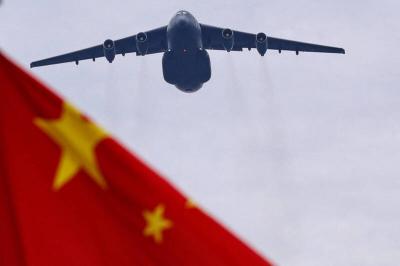The Ministry of Transportation and Communications (MOTC) said it aims to reduce the deaths from traffic accidents by 3 to 5 percent each year and slow the increase in the number of injuries within two years.
The goal was unveiled in a convention at the Taipei Expo Park yesterday, where central and local government officials pledged to enhance road safety nationwide.
Ministry statistics showed that the nation had more than 20 million registered motor vehicles last year. While the number of traffic fatalities dropped from 3,140 in 2006 to 1,928 last year, the number of injuries caused by traffic accidents exceeded 300,000 each year between 2011 and last year and shows signs of gradually increasing.
The ministry also found that more than 90 percent of the traffic accidents happened because the drivers lacked an awareness of road risks and driving ethics.
Minister of Transportation and Communications Yeh Kuang-shih (葉匡時) said that though the deaths caused by traffic accidents have dropped significantly, the number of accidents was still higher than in most advanced countries.
“The death or injury of an individual not only affects the person, but also their family and society,” Yeh said. “Reducing traffic accidents should be a goal we need to work on constantly.”
Yeh said the massive road safety campaign would target four groups: motorcyclists, older drivers, cyclists and drivers of special vehicles. The last category includes drivers of tour buses, gravel trucks or large vehicles carrying dangerous items.
“About 70 to 80 percent of the accidents involve motorcycles and one-fourth of the accidents involve the elderly,” Yeh said. “People are shocked and scared when they hear about accidents involving tour buses. Cyclists should observe the traffic rules, too, as there are more of them on the streets.”
Beyond decreasing deaths at a rate of 3 percent or 5 percent per year, the ministry also aims to reduce total fatalities to below 1,500 by 2020.
Taipei Mayor Hau Lung-bin (郝龍斌) said that each death in an accident is another tragedy for a family. He described how a conversation he had with a borough warden six months ago helped improve the traffic facilities in the city.
“He told me that his mother passed away last year after being hit by a reckless driver. The cause of the accident was that the traffic signals were blocked by a tree and the driver did not follow the traffic rules either. Instead of becoming passive, the borough warden became more aware of the traffic facilities. I was impressed by what he said in that meeting. We, as government workers, should consider the needs of the people, because we could be held responsible for any tragedy for failing to improve the infrastructure,” Hau said.
Vice Premier Mao Chi-kuo (毛治國), a former head of the ministry, said that the number of the deaths had dropped below 2,000 last year, but traffic accidents per capita were three time higher than that of Japan.
He shared a story of how a friend was hit by a car two days ago and died.
“He was a doctor and was all ready for an appointment,” Mao said. “Instead of using the pedestrian crossing, he crossed the street directly from the bus stop near National Taiwan University.”
“Enhancing the road safety is like doing a good deed,” Mao added. “Judging from statistics, we still have a lot of room to improve.”

Beijing could eventually see a full amphibious invasion of Taiwan as the only "prudent" way to bring about unification, the US Department of Defense said in a newly released annual report to Congress. The Pentagon's "Annual Report to Congress: Military and Security Developments Involving the People's Republic of China 2025," was in many ways similar to last year’s report but reorganized the analysis of the options China has to take over Taiwan. Generally, according to the report, Chinese leaders view the People's Liberation Army's (PLA) capabilities for a Taiwan campaign as improving, but they remain uncertain about its readiness to successfully seize

Taiwan is getting a day off on Christmas for the first time in 25 years. The change comes after opposition parties passed a law earlier this year to add or restore five public holidays, including Constitution Day, which falls on today, Dec. 25. The day marks the 1947 adoption of the constitution of the Republic of China, as the government in Taipei is formally known. Back then the Chinese Nationalist Party (KMT) governed China from Nanjing. When the KMT, now an opposition party in Taiwan, passed the legislation on holidays, it said that they would help “commemorate the history of national development.” That

Taiwan has overtaken South Korea this year in per capita income for the first time in 23 years, IMF data showed. Per capita income is a nation’s GDP divided by the total population, used to compare average wealth levels across countries. Taiwan also beat Japan this year on per capita income, after surpassing it for the first time last year, US magazine Newsweek reported yesterday. Across Asia, Taiwan ranked fourth for per capita income at US$37,827 this year due to sustained economic growth, the report said. In the top three spots were Singapore, Macau and Hong Kong, it said. South

Snow fell on Yushan (Jade Mountain, 玉山) yesterday morning as a continental cold air mass sent temperatures below freezing on Taiwan’s tallest peak, the Central Weather Administration (CWA) said. Snowflakes were seen on Yushan’s north peak from 6:28am to 6:38am, but they did not fully cover the ground and no accumulation was recorded, the CWA said. As of 7:42am, the lowest temperature recorded across Taiwan was minus-5.5°C at Yushan’s Fengkou observatory and minus-4.7°C at the Yushan observatory, CWA data showed. On Hehuanshan (合歡山) in Nantou County, a low of 1.3°C was recorded at 6:39pm, when ice pellets fell at Songsyue Lodge (松雪樓), a